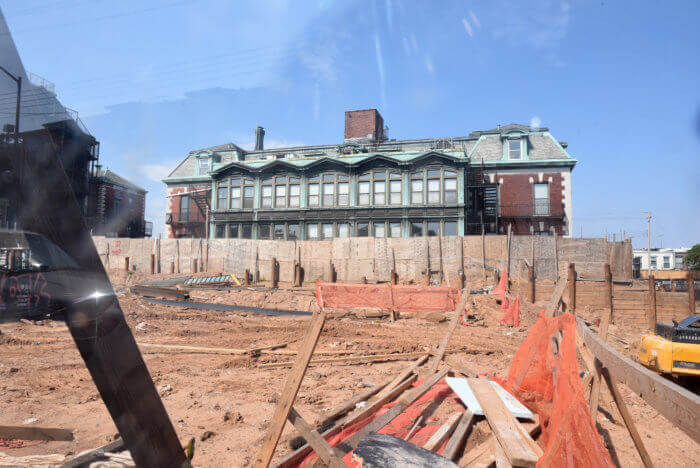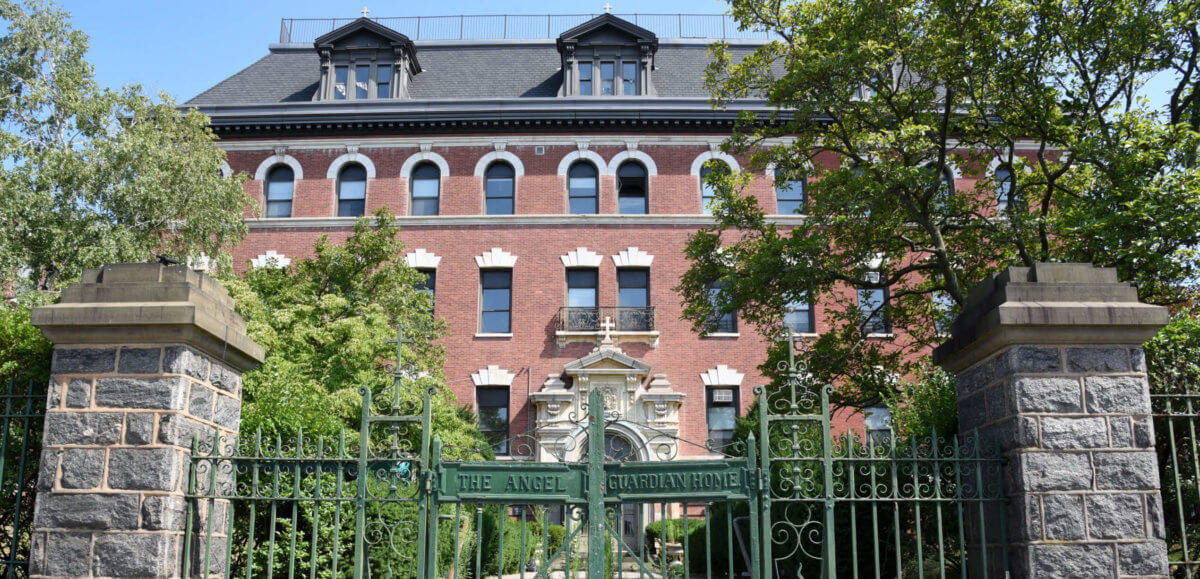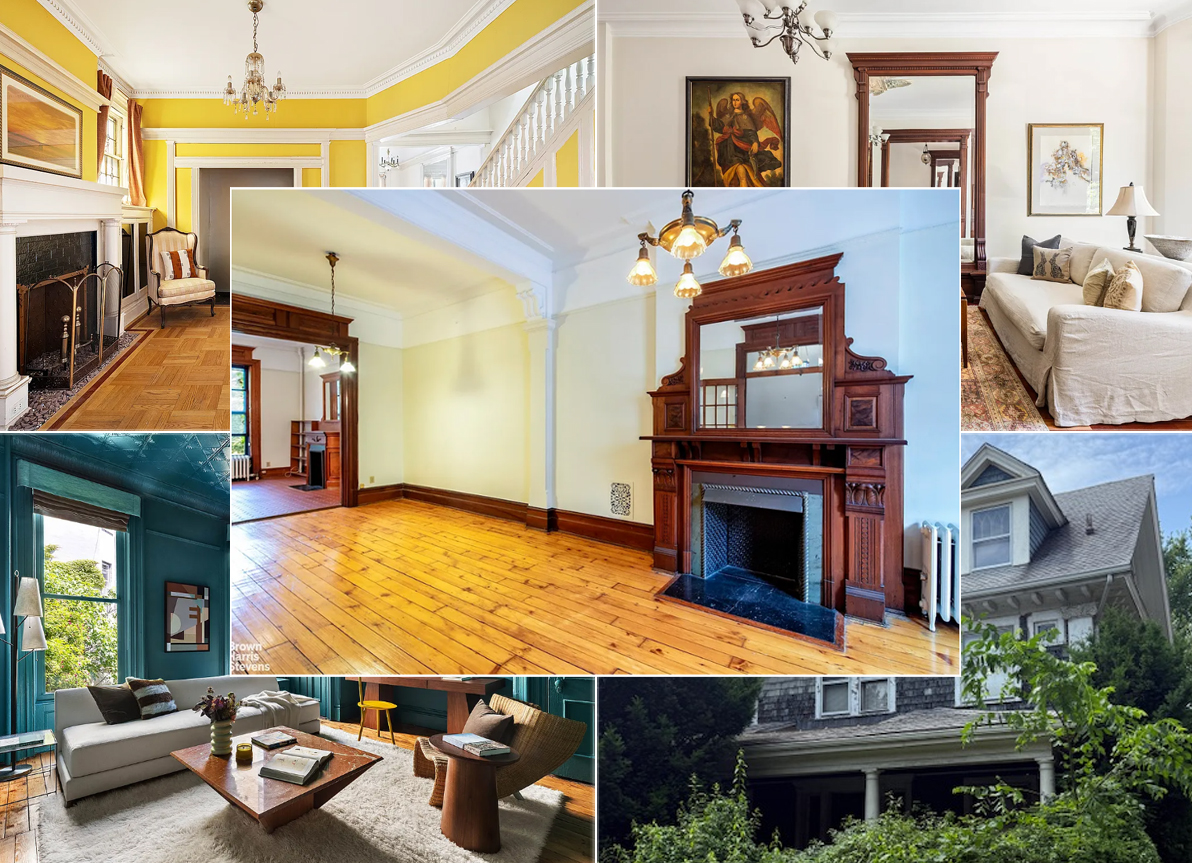LPC Votes Unanimously to Landmark Dyker Heights’ Angel Guardian Home
The century-old Angel Guardian Home, a beloved former orphanage, Tuesday became the neighborhood’s first historic landmark.

Photo by Caroline Ourso
City officials voted to designate Dyker Heights’ century-old Angel Guardian Home a landmark on November 10 — making the beloved former orphanage the neighborhood’s first historic landmark.
The unanimous vote from the Landmarks Preservation Commission comes after years of pressure from local activists, who’ve pushed to save the stately 1899 building that spans 12th Avenue between 63rd and 64th streets. The historic status will now preserve the exterior of the building from any unapproved alterations, while still allowing developers to renovate the interior of the structure.
The Sisters of Mercy owned the approximately 140,000 square foot lot for nearly 120 years, and ran an orphanage out of the main building. The home also served as a social services hub for unwed mothers, and later as a senior center, which continued running until the building’s hush-hush sale to developer Scott Barone for $37.5 million in 2018.
The sale stirred outrage among former Angel Guardian Home residents and locals, who slammed the Sisters for planning to evict the site’s seniors, and for threatening the future of the historic campus.

About six months before the sale was finalized, a group of local stakeholders called Guardians of the Guardian submitted a request to the Landmarks Preservation Commission to landmark the whole lot, which housed several other buildings on a bucolic campus stretching to 13th Avenue. However, the majority of the campus was demolished before the commission moved on the proposal.
Developer Scott Barone has since divided the campus into three parcels and re-sold two of them. The parcel facing 13th Avenue will house a public school, and the middle section between the school and the main building was sold to another developer who has razed it to build condos.
Barone plans to turn the landmarked main building into assisted senior living, and raze an adjacent building, known as the “mercy” or “convent” building, to build additional housing.
The Landmark Preservation Commission announced in June that it would consider the Angel Guardian Home’s main building for historic status, but locals at a public hearing in August urged the panel to also preserve the mercy building — a small structure behind the landmark that was used as the nursery, and is the only other structure left on the lot.
Local historians say the mercy building, built in 1906, boasts the same architectural and historic value as the main building, and was central to the identity of the Angel Guardian Home. The Angel Guardian complex, they argue, encompassed not only the main structure, but the entire campus.
“There were sidewalks, there were landscape features, there were trees. It was really was a bucolic island,” said Kelly Carroll, the director of advocacy and community outreach for the Historic Districts Council. “The Angel Guardian building wasn’t a lone structure.”
Local leaders including Councilman Carlos Menchaca and the chairwoman of Community Board 10 penned a letter asking the commission to include the mercy building in its designated site, but several landmarking officials said they didn’t believe the building held the same historical significance.

“The mercy building is secondary to the main building in its siting and prominence, and as such, not as essential or critical to appreciating the special architectural and cultural significance of the Angel Guardian Home and its history,” said Kate Lemos McHale, the director of research for the commission, during the Nov. 10 vote.
But three other commissioners pushed back against McHale’s characterization of the building — saying they traveled to the site themselves, and believed the mercy building was equally worthy.
“If we were to look at the mercy building as a free standing structure, what would we do? … If we were to say, ‘Okay, this is the building, free standing, on its own,’ would be we designate it?” said Commissioner John Gustafsson. “Because to the layman — and to myself included, having visited the site — it seemed worthy, so maybe we need to actually say that on the record.”
Another commissioner criticized the slow process by which the commission designates buildings as landmarks, which allows developers to demolish historic lots before they come for a vote.
“We are trapped because things are in motion, and buildings have been sold, and developments have been drawn, and one sometimes has to accept half a loaf. And I think, in this case, we are,” said Commissioner Michael Goldblum. “What you had here was a campus … and the remnants of that campus even after its depredations further down the block were up until recently still quite evident.”
Commissioner Jeanne Lutfy echoed Goldblum and Gustafsson’s concerns, and said that the commission should work more quickly to identify and landmark historic buildings before they are sold or demolished.
Still, the chair of the Landmarks Preservation Commission said that Barone will work with the commission to design the building’s replacement, and to make sure that the new additions match the landmarked structure.
“The owner has entered into an agreement with us to allow us to regulate or oversee the design criteria,” said Sarah Carroll.
Barone told the Brooklyn Eagle in September that he was planning to raze the mercy building this year.
Editor’s note: A version of this story originally ran in Brooklyn Paper. Click here to see the original story.
Related Stories
- Public Hearing on Landmarking Angel Guardian Home in Dyker Heights Set for Tuesday
- Catholic Nuns Ink Deal to Sell Historic Dyker Heights Orphanage to Unnamed Developer
- Residents Tell LPC That Hebron Development Will Destroy the ‘Heart’ of Crown Heights North
Sign up for amNY’s COVID-19 newsletter to stay up to date on the latest coronavirus news throughout New York City. Email tips@brownstoner.com with further comments, questions or tips. Follow Brownstoner on Twitter and Instagram, and like us on Facebook.





What's Your Take? Leave a Comment